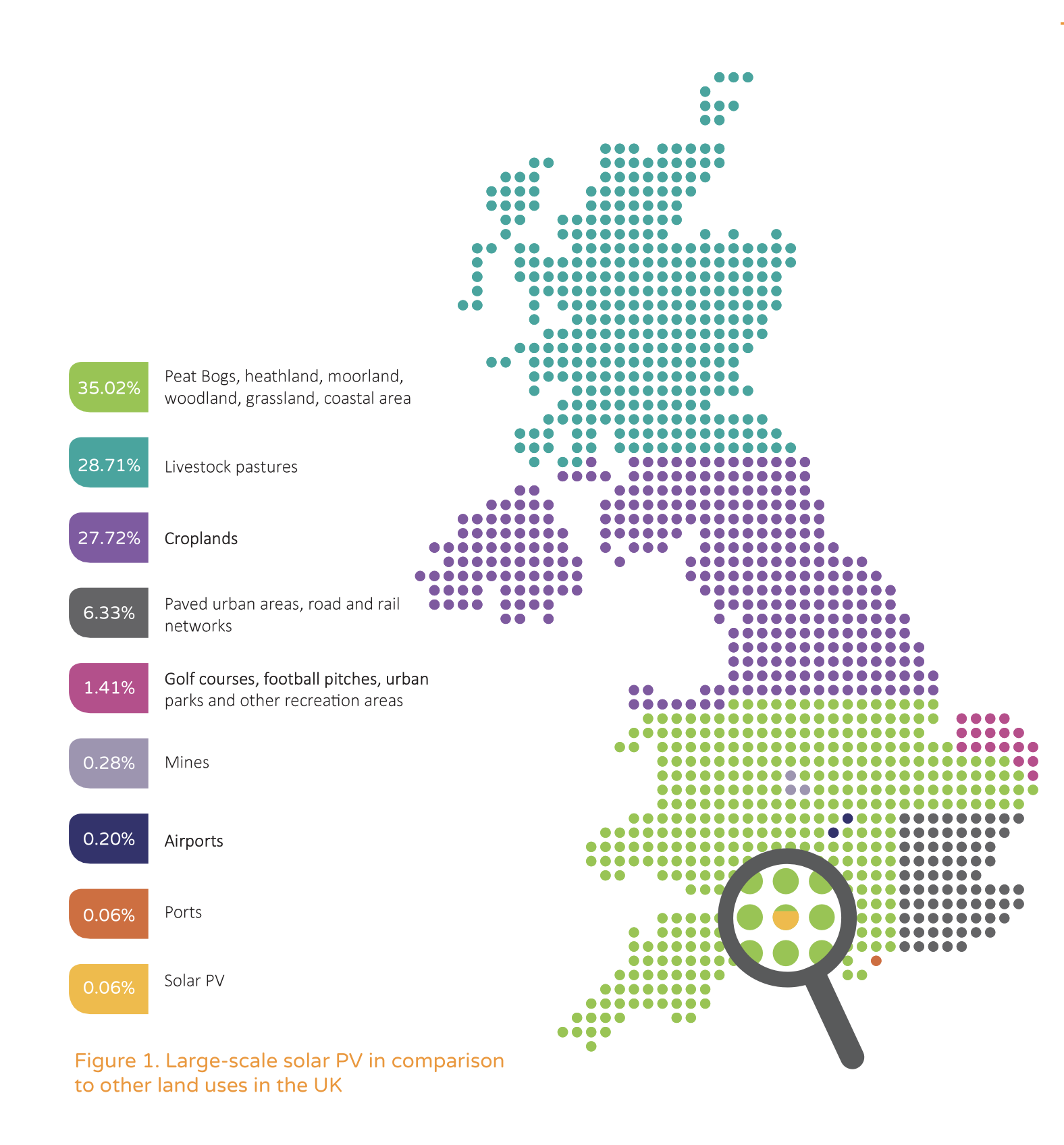Land use and solar
Source: Solar Trade Association, 2019
If the whole UK was powered by renewables, solar would only use 2.1% of land
That’s only slightly more than is currently used for golf courses and other recreational activities
Our solar farms deliver a triple land use, supporting biodiversity and food production as well as generating clean electricity and reducing carbon.
We often hear people say they worry about the loss of agricultural land to solar farms. But even if we were to power the UK using only renewable energy and green hydrogen, we would only need around 2.1% of the UK’s total landmass for solar power. Compared to the 71.7% of land currently used for agricultural purposes, it is remarkably small.
Eden’s solar farms maintain agricultural use alongside carbon reduction and boosting biodiversity. The NFU, which supports large-scale solar PV, calls it multifunctional land use.
As Jeremy Clarkson showed in his recent forays into farming, it is getting harder than ever to earn a living from agriculture, thanks to the challenges of Brexit, soil degradation and climate change. With growing soil degradation and increased extreme weather events affecting crop yields, many farmers rely on diversification to survive - whether it is using land for holiday parks, horse grazing and livery, or generating renewable energy. Solar provides a reliable long-term income while farmers continue to cultivate other land, providing financial security during years with poor yields.
We typically use land that is Grade 3b and below, and land that has often previously seen increasingly high levels of chemical inputs to combat falling yields. Lower grade land is frequently used for grazing livestock, which can usually continue even if in a different form, for example with sheep instead of cattle. The land is managed for biodiversity, sown with a mixture of native wildflower and meadow grassland species. This grows well between the widely-spaced rows and beneath the panels – the latest technology, single axis trackers, move with the sun and don’t create permanent shading. It provides good grazing for sheep and most of our sites also host apiaries so honey can be harvested from bees foraging in the wildflower meadows.
Food or energy?
Many think that using agricultural land for solar will increase our reliance on imported food. But until we can grow bananas, coffee and avocados in the UK, we will still need to import much of our food. We also have a huge problem with wasting food - throwing out around a third of it - which is a big contributor to climate change.
The UK also uses about 1.6% of arable land to grow energy-related crops, 80% of which goes to generate heat and power (source: DEFRA). Solar power can generate the same amount of power using only 5% of the land required by an anaerobic digester (source NFU).
We rely on imported energy as well as food, importing 35% of our total energy consumption in 2020, (source: BEIS Digest of UK Energy Statistics 2020) from countries such as Norway, the Netherlands and Qatar, which can come with geopolitical risk. Locally-generated renewable energy will not only reduce our carbon emissions but help to increase our energy self-sufficiency and economic independence too.
What about trees?
Planting trees is also important for carbon reduction, and we plant a lot of new trees and hedgerows at our solar farms for screening and biodiversity value as well as carbon cutting. But tree planting alone isn't a solution. In fact, if we were to only plant trees in order to reach UK Net Zero, we would require more than double the landmass of the UK, according to a recent Oxfam study. As the report points out, this is the strategy that the four biggest oil companies are relying on to cut carbon while they continue to produce fossil fuels - which is completely unworkable.
In reality, how we use land to get to Net Zero requires a mix of different solutions: generating renewable energy, carbon sequestration, biodiversity, and farming. And we can do all of these on a solar farm.


